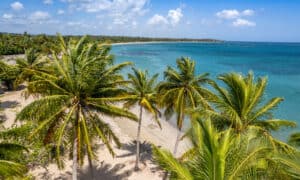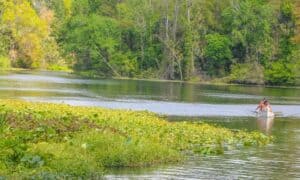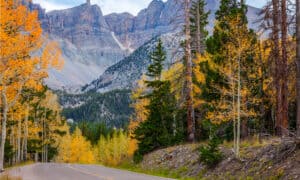Known for its unique landscapes, steamy beaches, and vast wilderness, California has long been established as a state showcasing an array of stunning national parks in the United States.
While there are more than 30 national parks in California, there is an elite group of 11 national parks among them. These are the crown jewels of California, hosting millions of visitors every year from worldwide.
Here is a list of the 11 best national parks in California, why you should visit them, and what to expect from each park.
1. Death Valley National Park
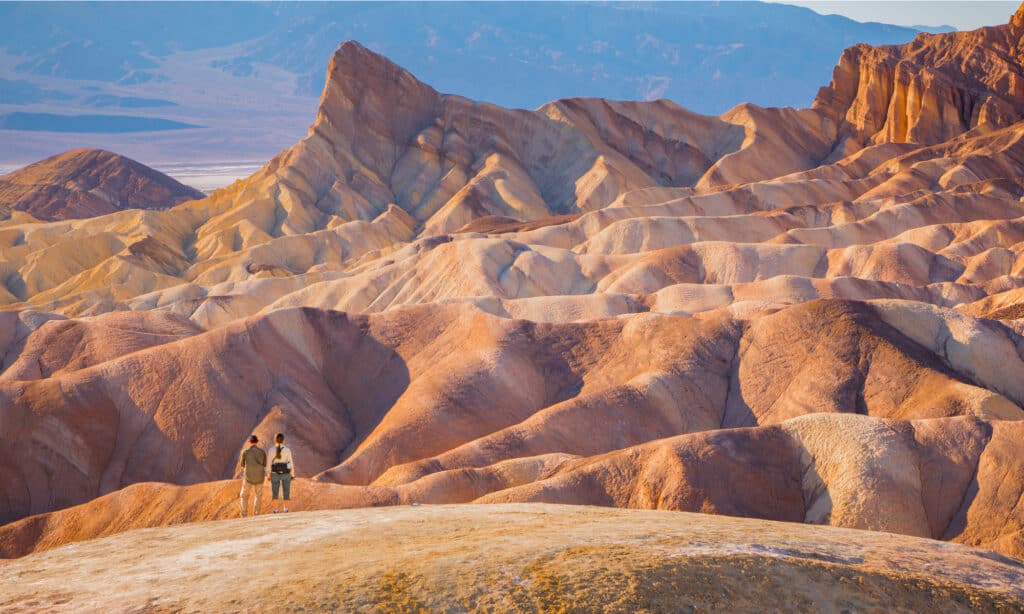
Death Valley National Park is home to ground squirrels, roadrunners, ravens, and coyotes.
©Dan Sedran/Shutterstock.com
| Death Valley National Park | |
|---|---|
| Size | 3,373,063 acres |
| Animal to See | Coyote |
| Attraction to See | Zabriskie Point |
Death Valley National Park is a true gem in eastern California. While the park may be the driest and the hottest spot with the lowest elevation on the continent, the surreal landscapes offer their charm.
There is more life in the park than the name suggests. Over 300 people live in the area year-round. The park also has a variety of plants and abundant species of animals. Ground squirrels, roadrunners, ravens, and coyotes are often spotted within the park, but other animals live in Death Valley, either hidden or unnoticed by visitors.
If you think that the desert is a dull and colorless place, you need to visit the Artist’s Palette, where you will see the magnificent green and turquoise hues that keep fading and deepening with the changing light. Don’t be surprised to find a completely different palette when you visit another day.
2. Joshua Tree National Park
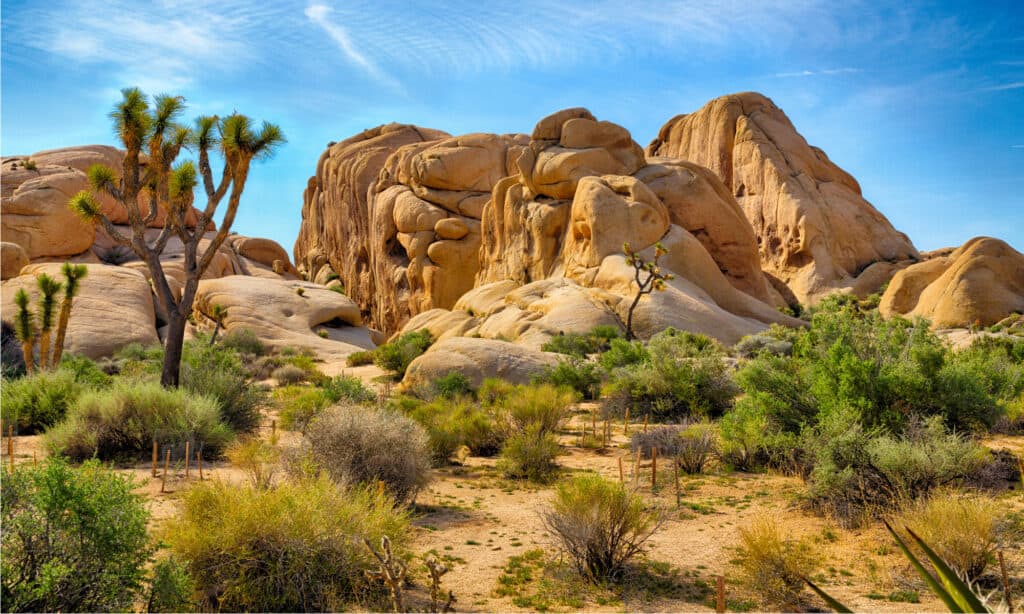
Joshua Tree National Park allows you to engage in activities like scenic drives, camping, and photography.
©Gary C. Tognoni/Shutterstock.com
| Joshua Tree National Park | |
|---|---|
| Size | 795,156 acres |
| Animal to See | White-tailed Deer |
| Attraction to See | Keys View |
Joshua Tree National Park seems like it was made for hikers. You may as well engage in other activities like scenic drives, camping, and photography, but the true wonder of Joshua Tree lies in its trails. Every trail guarantees you stunning views of the desert landscapes and rugged rock formations within the park.
Watching wildlife is another unique and lovely experience you should not miss out on at the park. Hiking to 49 Palms Oasis may reward you with a glimpse of white-tailed deer, bobcats, coyotes, kangaroo rats, and bighorn sheep.
3. Channel Islands National Park
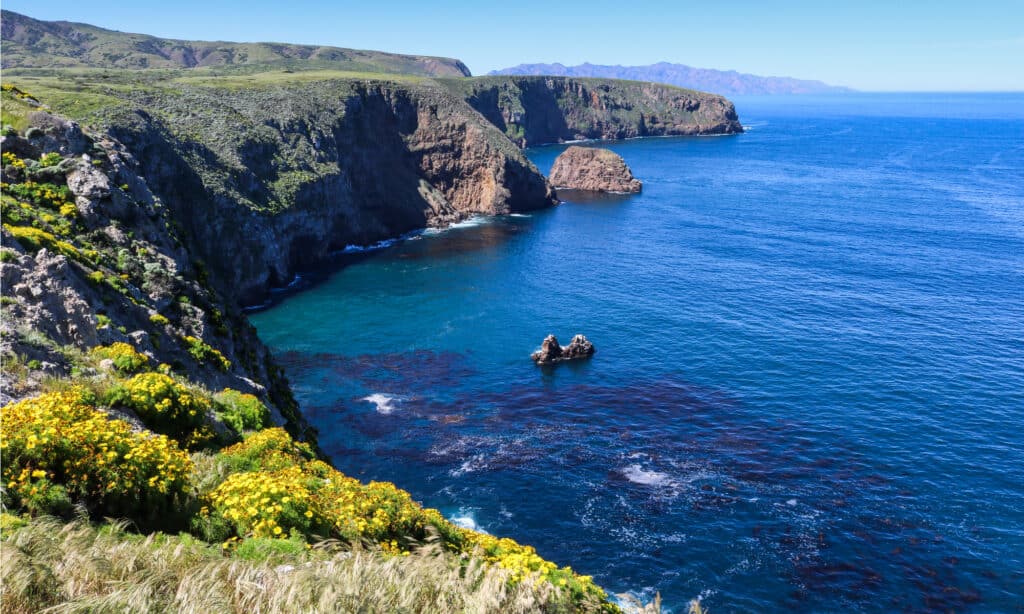
Channel Islands National Park is best known for its stunning caves and islands.
©Bram Reusen/Shutterstock.com
| Channel Island National Park | |
|---|---|
| Size | 249,561 acres |
| Animal to See | Shark |
| Attraction to See | Anacapa Island Lighthouse |
Channel Islands National Park is best known for its stunning caves and islands. You could lay your eyes upon the remarkable Anacapa Island and San Miguel Island every day, and it would still take your breath away.
Channel Islands is the perfect place to kayak. There are over a hundred sea caves to explore and enjoy the breathtaking views of the scenic coastlines. If you love paddling, Santa Cruz Island’s Painted Cave should be at the top of your list.
The marine sanctuary offers year-round sea animal viewing opportunities. Blue whales, sharks, California sea lions, harbor seals, dolphins, and other marine species call the Channel Islands home.
4. Redwood National Park
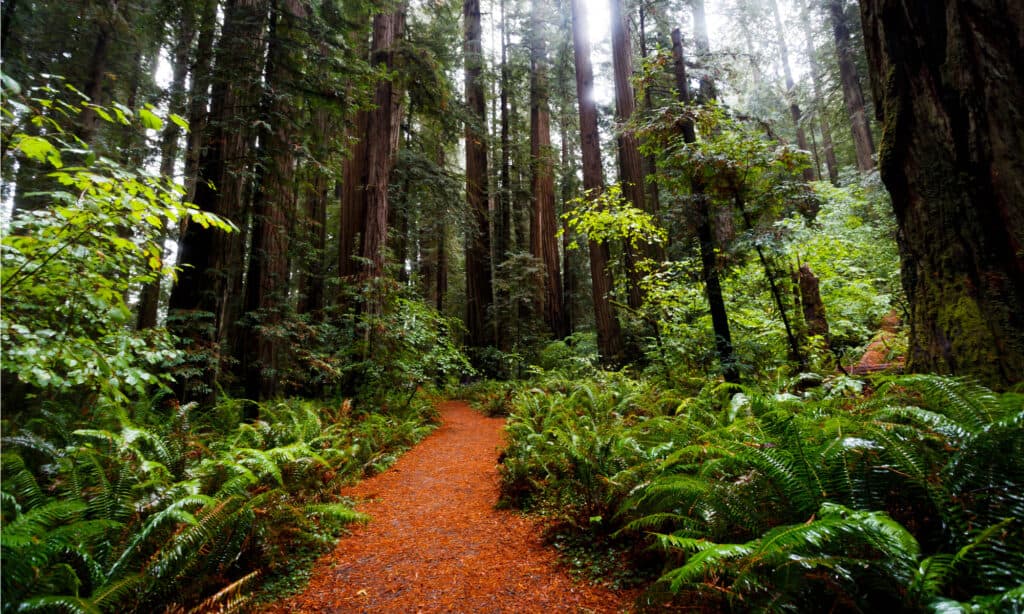
Redwood National Park is famous for its appearance in the Jurassic Park movie franchise.
©The Migrating Monkey/Shutterstock.com
| Redwood National Park | |
|---|---|
| Size | 131,983 acres |
| Animal to See | Roosevelt Elk |
| Attraction to See | Fern Canyon |
Redwood National Park protects the tallest trees in the world. But there is much more at Redwood than just magnificent, giant trees! The park is also famous for its appearance in the Jurassic Park movie franchise, which shows some parts of the Fern Canyon.
Hikers will rejoice at the majestic hiking trails such as the James Irvine Trail, which runs along ridges and hillsides. The trail also benefits both beginners and experienced hikers. You don’t need a permit to hike this trail.
Other benefits of the park include viewing wildlife such as Roosevelt elks, black-tailed deer, raccoons, bobcats, Pacific giant salamanders, and northern spotted owls.
5. Yosemite National Park
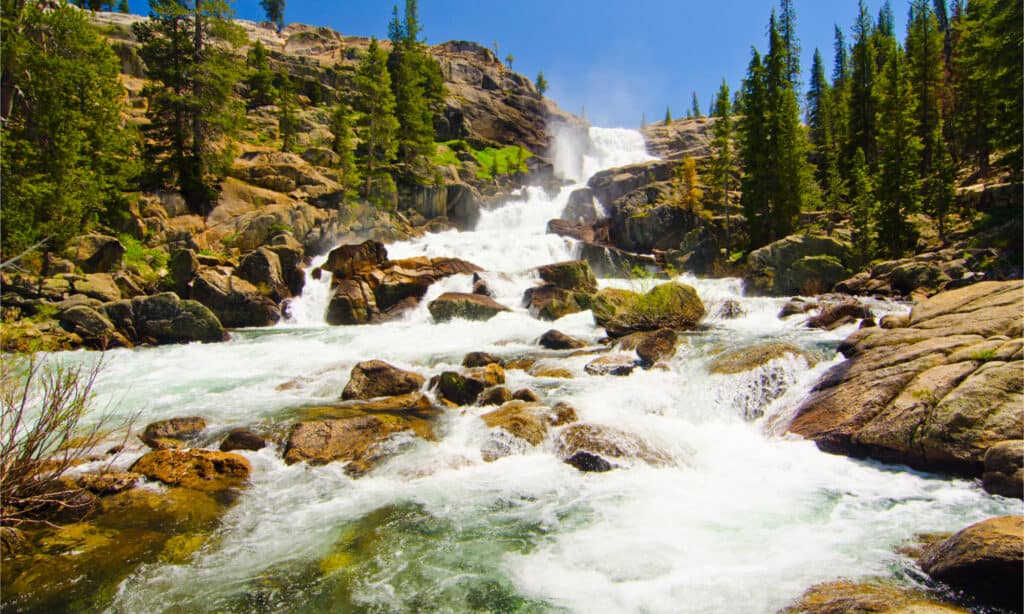
Yosemite National Park is home to mountain lions, bighorn sheep, bobcats, mule deer, black bears, foxes, and numerous bird species.
©Robert Bohrer/Shutterstock.com
| Yosemite National Park | |
|---|---|
| Size | 759,620 acres |
| Animal to See | Black Bear |
| Attraction to See | Glacier Point |
If you’ve ever wanted to explore a land filled with tunnel views, meadows, waterfalls, granite cliffs, and giant ancient trees you can’t see anywhere else, Yosemite National Park should be number one on your bucket list.
A trip to the park will include the opportunity to photograph mountain lions, bighorn sheep, bobcats, mule deer, black bears, foxes, and numerous bird species.
6. Sequoia National Park
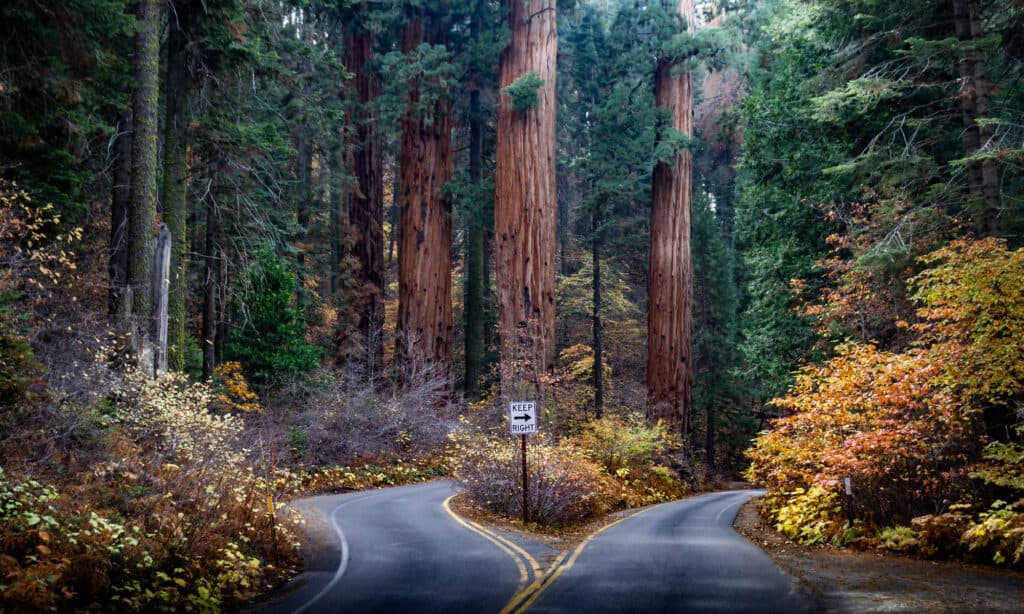
Sequoia National Park is a great place by hiking along the Crescent Meadow Loop Trail and the Alta Peak Trail.
©iStock.com/Sara Edwards
| Sequoia National Park | |
|---|---|
| Size | 404,064 acres |
| Animal to See | Black Bear |
| Attraction to See | Mount Whitney |
A completely different world lies to the east of Visalia, California, with over 8000 giant sequoia trees, underground crystal caves, breathtaking meadows, and striking rock formations.
Discover what makes Sequoia National Park a great place by hiking along the Crescent Meadow Loop Trail and the Alta Peak Trail. These hikes will take you through the magnificent views that the park has to offer.
The park is home to local animal species like gopher snakes, black bears, beavers, wolverines, opossums, badgers, and coyotes. Most of these animals live near manzanita and bitter-cherry bushes.
7. Kings Canyon National Park
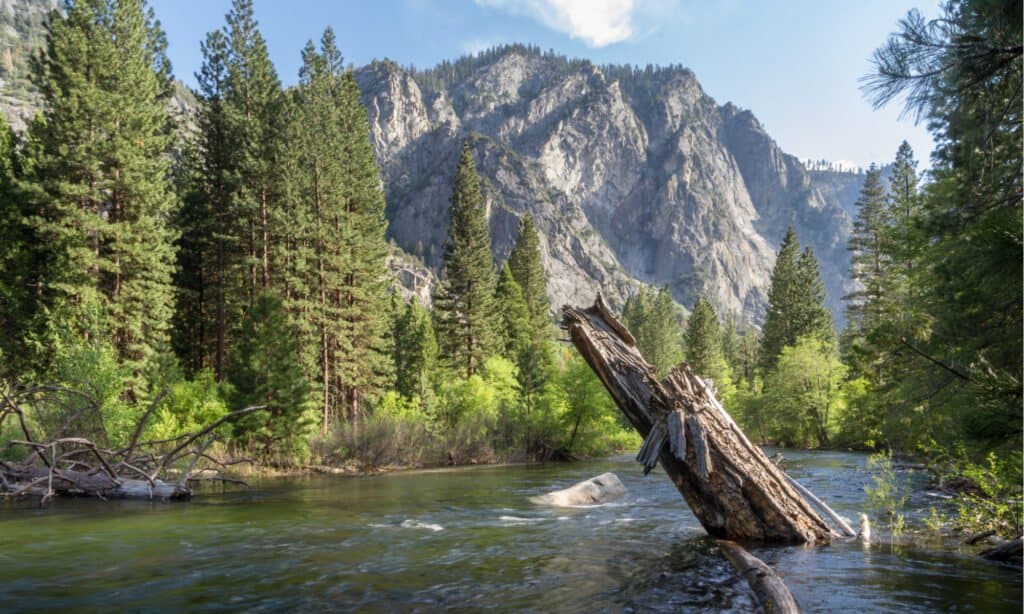
Kings Canyon National Park is also referred to as the “land of bears.”
©Leene/Shutterstock.com
| Kings Canyon National Park | |
|---|---|
| Size | 461,901 acres |
| Animal to See | Bobcat |
| Attraction to See | Grant Grove |
Located next to Sequoia National Park, Kings Canyon National Park features the largest ancient sequoia trees you’ll never see anywhere else. King Canyon’s terrain is similar to that of Yosemite. However, it has distinctive rock outcroppings and profound valleys.
No matter when you visit, be sure to take some time to stargaze at the park’s entrance, where the night sky is magical. Even if you’re not a morning person, drag yourself out of bed to watch the sunrise at Grant Grove Village.
The park is also referred to as the “land of bears.” Many black bears roam within the park. Stay away from them because they may appear tame from a distance, but they are strong and unpredictable in reality. Other animals, including bobcats, yellow-bellied marmots, mule deer, squirrels, and pikas, also call Kings Canyon home.
8. Pinnacles National Park
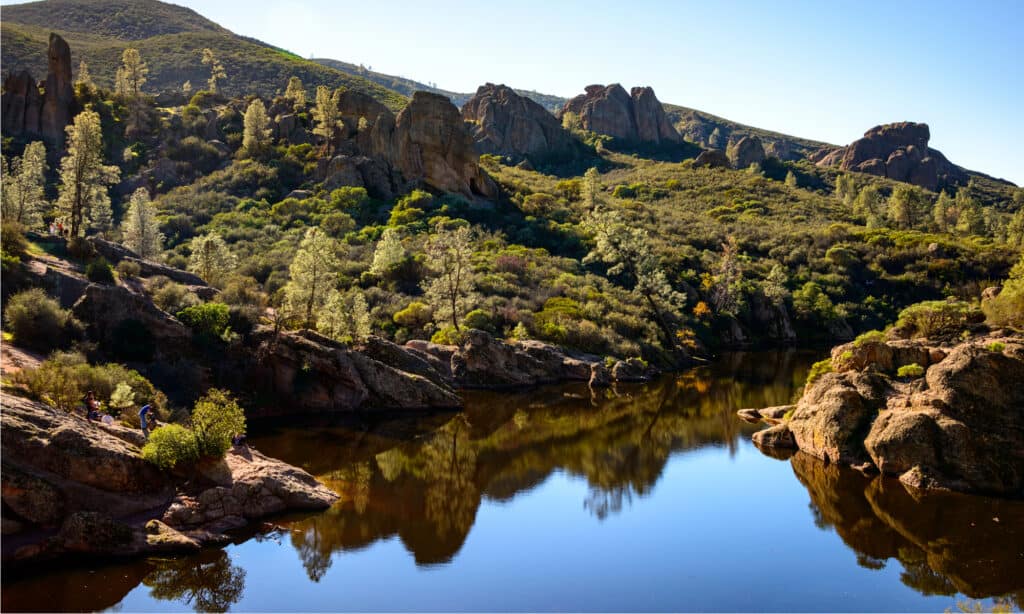
Pinnacles National Park offers spectacular views of the blooming wildflowers during spring.
©Zack Frank/Shutterstock.com
| Pinnacles National Park | |
|---|---|
| Size | 26,606 acres |
| Animal to See | California Condor |
| Attraction to See | Balconies Cave |
Visit Pinnacles National Park to see the majestic California condor, one of the critically endangered species in the United States.
Most visitors come to explore the caves, but rock climbing in the park’s Pinnacles is impressive, though challenging even to the advanced climbers. Experienced hikers should traverse the High Peaks Trail, one of the strenuous trails with steep climbs at the Pinnacles.
Get spectacular views of the blooming wildflowers by touring Pinnacles National Park in spring. Juniper Canyon Trail, Balconies Trail, and High Peaks Loop offer the best views of the wildflowers between January and June.
9. Lassen Volcanic National Park
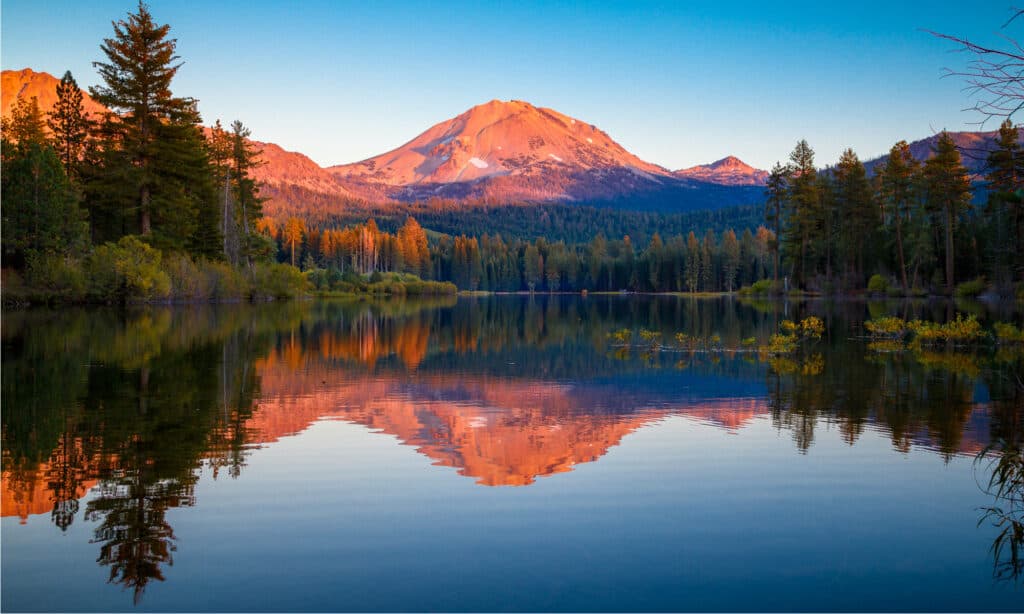
You may catch a glimpse of raptors, waterbirds, Douglas squirrels, and black-tailed deer at Lassen Volcanic National Park.
©Engel Ching/Shutterstock.com
| Lassen Volcanic National Park | |
|---|---|
| Size | 106,372 acres |
| Animal to See | American Black Bear |
| Attraction to See | Manzanita Lake |
Steaming vents, fumaroles, striking volcanoes, and bubbling mud pots are on the list of things to see at Lassen Volcanic National Park, where the flower-filled meadows and stunning mountains take you on a winding journey.
Make sure you hike along the Manzanita Lake Loop to enjoy the scenic views and watch wildlife. You may catch a glimpse of raptors, waterbirds, Douglas squirrels, and black-tailed deer along this trail.
10. Devils Postpile National Monument
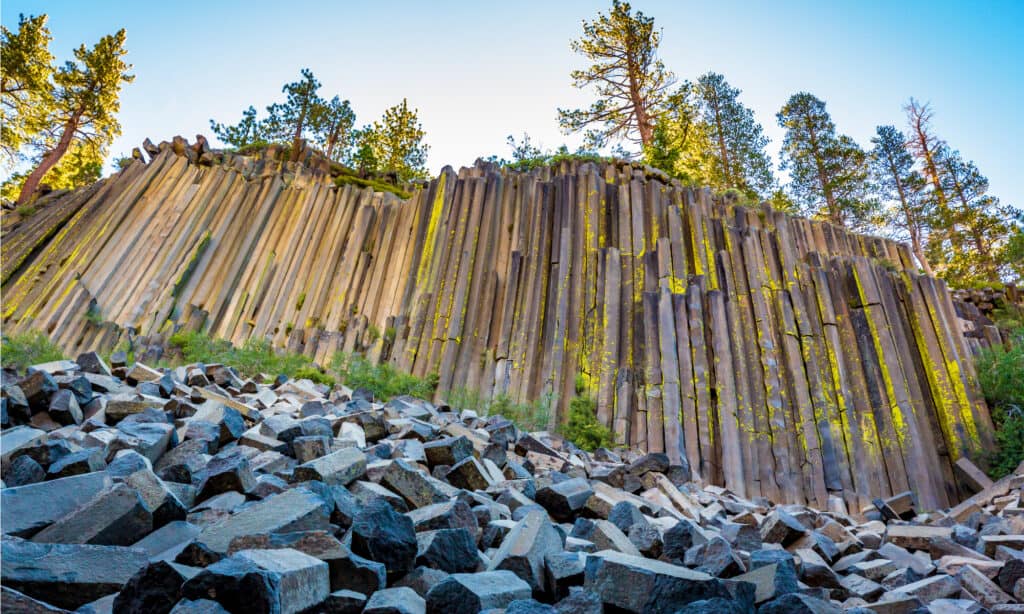
Devils Postpile National Monument is home to around 47 species, including pine martens, black bears, coyotes, and mule deer.
©Png Studio Photography/Shutterstock.com
| Devils Postpile National Monument | |
|---|---|
| Size | 798 acres |
| Animal to See | Black Bear |
| Attraction to See | Rainbow Falls |
Explore the unusual rock formations at Devils Postpile National Monument any time of the year. The protected area features beautiful forests, wildflowers, and waterfalls.
Hike Rainbow Falls to get the best view of the national monument. This is the most popular trail, and it is often crowded. So, you need to come early or during the off-season to avoid the crowds.
Devils Postpile is home to around 47 species, including pine martens, black bears, coyotes, and mule deer. They are easily identifiable in the monument.
11. Point Reyes National Seashore
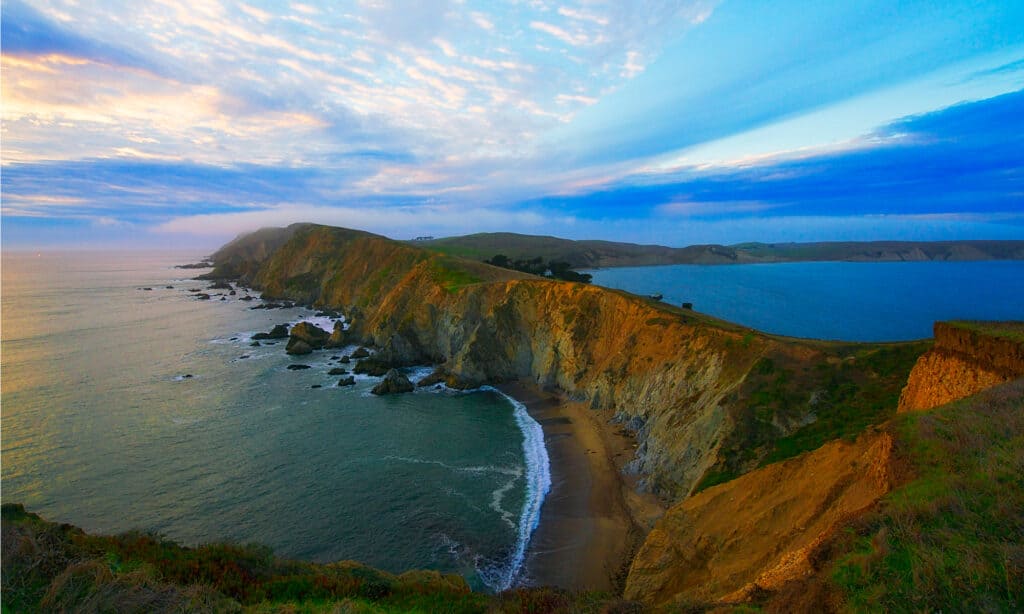
Point Reyes National Seashore allows you to explore a lot of outdoor activities.
©Xiu Yu Photography/Shutterstock.com
| Point Reyes National Seashore | |
|---|---|
| Size | 71,028 acres |
| Animal to See | Elk |
| Attraction to See | Alamere Falls |
Most people have heard of Point Reyes National Seashore, thanks to its treacherous waters and coasts. The place also protects various elements, such as the Point Reyes Lighthouse, a perfect place to view migrating California grey whales.
There are a lot of outdoor activities to explore at Point Reyes. You can engage in boating activities or hike up to Mt. Wittenberg, where you will get panoramic views of the seashore.
You may also take a scenic drive to Tule Elk Reserve and Tomales Point, where you will learn about dairy ranching and also get a chance to see many elk. The place is only about a 30-40-minute drive from the Bear Valley Visitor Centre.
The photo featured at the top of this post is © Robert Bohrer/Shutterstock.com
Thank you for reading! Have some feedback for us? Contact the AZ Animals editorial team.



